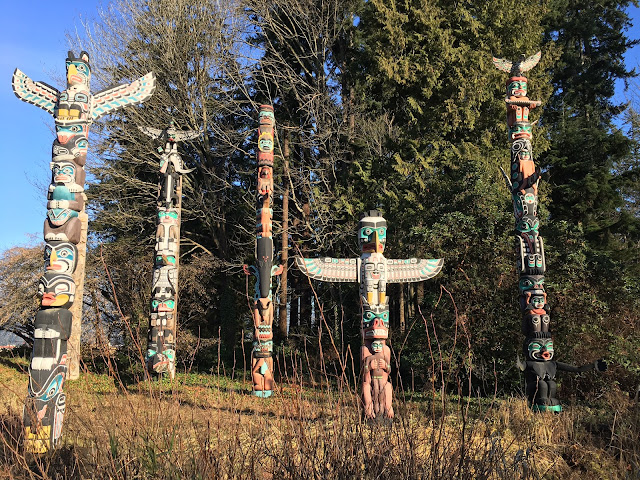Questions of Literary Identity
As part of my time studying here, I am taking a module
entitled Studies in World Literatures.
Within this class we have studied Martin Boyd’s The Langton Tetralogy, a quartet following the lives of the Langton
family, very loosely based on Boyd’s own family. The four texts are primarily
set in Australia, but have an Anglo-Australian feel in which 50% of the events
occur also in England, where the Langton family have a property named
Waterpark. Thus, the novels deal with
ideas of Anglo-Australian conflict in its presentation of these two opposing
but similar societies. Personally, I found this conflict particularly interesting
to consider. Previously at university I had studied a module entitled Transatlantic Literature. As the title
suggests, this module looked at literature concerning both America and England,
and their cross-cultural differences. One of the central conflicts was the idea
of the ‘New Woman’, an independent and adventurous woman in America, whose
actions were deemed unsophisticated and unconventional within Europe, ideas
explored in novels like Henry James’ Daisy
Miller and Edith Wharton’s The Custom
of the Country. In reading Martin Boyd’s tetralogy, I was reminded of the
transatlantic literature I had read, and the cultural divisions that were apparent
within this. Such divisions also exist within this quartet, but rather than focusing
on the ‘New Woman’, Boyd instead highlights one of the many concerns that arise
within a country that has been colonised; how to create their own sense of identity.
Frequently throughout The
Langton Tetralogy, the characters question whether Australia has “culture”,
and if it does, it is deemed to be inferior to that in Europe. On repeated
occasions the characters escape to Europe to get their fill of this culture,
which in itself reveals another major problem – rather than creating a sense of
culture in Australia, they instead repeatedly return to Europe to find it. The
novels also indicate another potential problem – the accent. Repeatedly,
characters in the novel are looked down upon for having an Australian accent,
as it is for some reason deemed unsophisticated. Those that excel are often
those that spent some portion of their childhood in England, such as Guy Langton,
and thus do not have as strong an Australian accent. Therefore, the tetralogy
raises a number of questions surrounding national identity, and what Australia’s
national identity was during the early 20th century. The frequency
with which the family flee to Europe, and the way individuals are looked down
upon, even by other Australians, due to their accent, all suggest a weak sense of
pride in Australian national identity.
Undoubtedly, a country’s literature and art are at the heart
of their national identity. The Boyd family
were a significant part of the creative output of Australia, or at least of
Melbourne. Martin Boyd was, of course, a writer, his brother Merric a potter, his
nephew Arthur Boyd, a painter, and Guy Boyd a sculptor. My tutor informed us in
the class that, as a family, the Boyds were extremely influential in the Melbourne
art scene. Not with the purpose of testing this theory, but rather from the human
habit of sharing newly acquired knowledge, I asked my Melbourne friends if they
had heard of Martin Boyd and the tetralogy I was reading, and they never had. Indeed,
they hadn’t heard of the Boyd family at all. This made me ask, if the Boyd
family are such a significant part of Australian literature and art, then how
had my friends from Melbourne never heard of them? This again suggests that
there is perhaps a lack of national pride in this literature.
When studying at university, it is natural to consider how some
of the themes we discuss reflect on the rest of our lives, and it seemed to
me that, just as Australia may perhaps lack national pride and national
literature, Canada may suffer in the same way. Canada has always feared being overshadowed
by the US. Even today there are regulation laws that state 60% of the yearly
content on radio shows must be Canadian because they fear the powerful
influence of US media. As part of this, Canada has also struggled to create a
national image and a literary scene that exists separately but still equally to
the US. Everyone can name famous American authors of the 20th
century – James Baldwin, Harper Lee, Ralph Ellison, F. Scott Fitzgerald.
However, the same cannot be said for Canadian authors. Indeed, this semester I
am studying a module entitled Canadian Literature
from 1920s, and even in this class we are spending 4 weeks on the International Concrete Poetry movement –
writing that is clearly not solely Canadian. Even within this class we seemed
to have struggled to find Canadian literature. It seems that Canada, just like Australia,
has struggled to find its national literary self.
But pride in Canadian literature should indeed exist. There
are numerous successful and inspirational Canadian authors. L. M Montgomery’s Anne of Green Gables is internationally renowned,
and we cannot forget the phenomenon that is Margaret Atwood. Rupi Kaur’s Milk and Honey has been translated into
30 languages and was on the New York Times Bestseller’s list for over a year. Having
recently seen Rupi perform live and heard her inspirational voice, this is
indeed literature to be proud of. As two countries that may have struggled to
find a national identity following colonisation, perhaps Canada and Australia
need to look to their literature to find a source of identity and pride.
Hopefully a post on my experience from seeing Rupi Kaur
perform will follow soon – I’ll see you then. x


Comments
Post a Comment